The Beast
Español | Español | Translation Sponsored by TCA
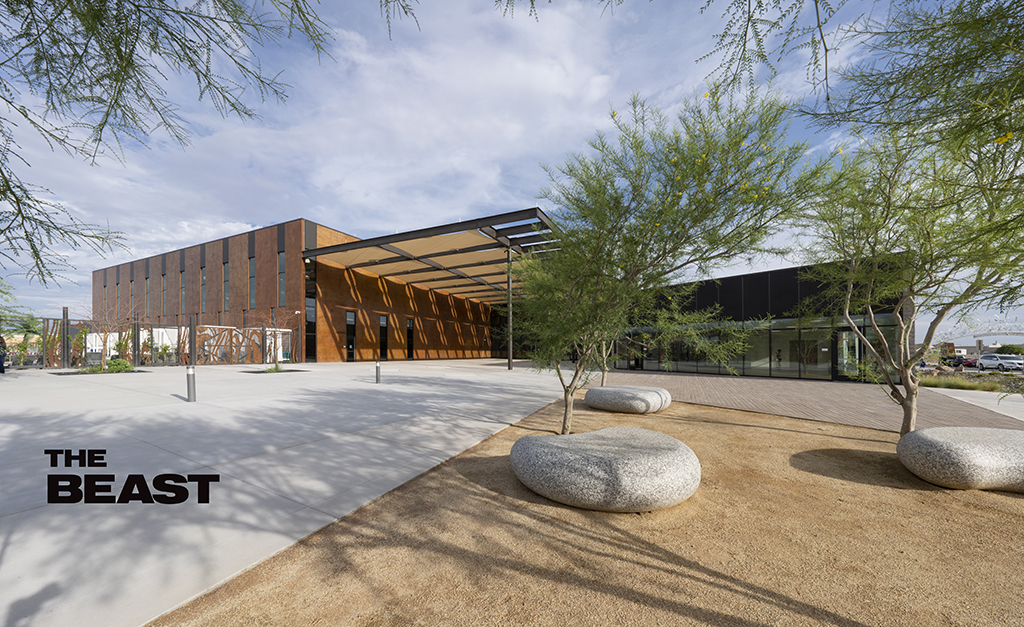
By: Ron Stelmarski, FAIA, Design Director/Principal, Perkins&Will
Images: James Steinkamp Photography
In the heart of the Chihuahuan Desert, about 40 miles from central El Paso, Texas, is Hueco Tanks State Park—an area of clustered rock formations that are home to hollows of water and petroglyphs dating back to 6000 BCE. The colors, forms, and light of Hueco Tanks have sparked human creativity for centuries.
The Dallas studio Perkins&Will drew inspiration from this rich historic site for El Paso’s new Eastside Regional Recreation Center, now known as “The Beast” after a community vote selected the nickname. Located in a part of the desert with a fast-growing population, the recreation center and water park are the first components of a 92-acre regional park that have transformed an extreme, high-altitude desert basin into an inviting oasis for the historically underserved multigenerational community.
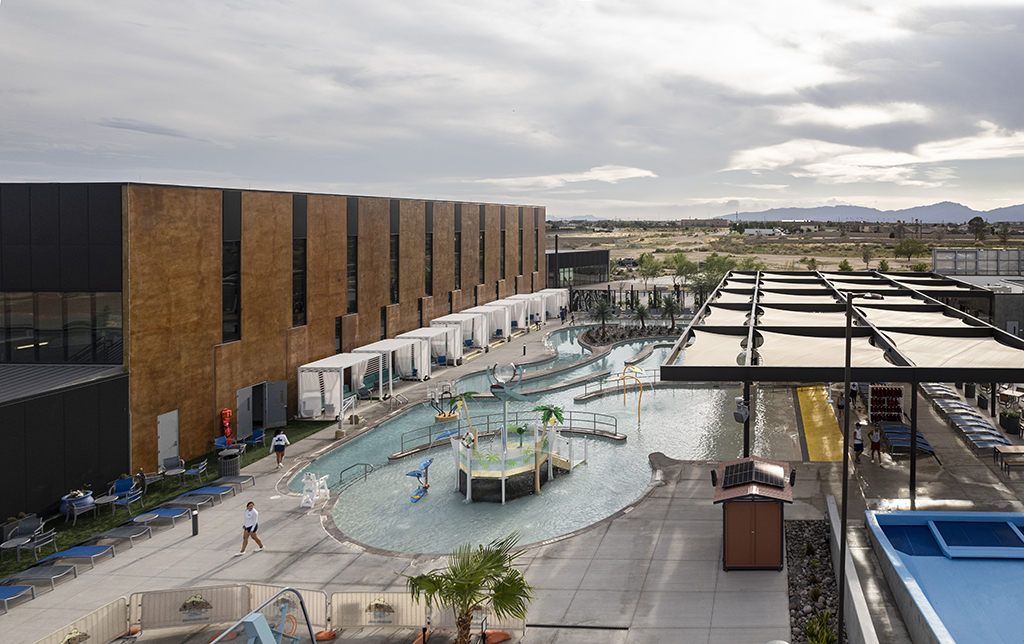
Seeking to enhance the quality of life for residents, the city of El Paso engaged Perkins&Will to spearhead the development of the park alongside local architecture firm, In*Situ. With a population of over 150,000, east El Paso is one of the fastest growing areas in Texas but it is also one of the least developed in terms of community resources, making this project a significant milestone for the community. The first phase included a state-of-the-art natatorium, community center, fitness center, gymnasium, and an outdoor waterpark. Informed by numerous stakeholder meetings, the designers addressed the community’s need for an oasis to escape the heat, creating swimming areas as temporary escapes from the weather while encouraging an activity that promotes well-being and connectivity.
Upon entering the recreational grounds, guests encounter a public art display referencing Hueco Tanks State Park. Dallas-based artist Brad Goldberg embraced elements of the park’s environment in the piece, incorporating palo verde trees and large granite boulders shaped into seats, creating an outdoor area of respite for guests at the front of the recreation center. A wide selection of local species helps conserve irrigation water throughout the landscape, with grading designed to accommodate periods of intense rainfall. Arroyos surround the building as clear reminders of the desert environment. A large plaza serves as a community civic space and a gateway to other areas of the center. On the west side of the building is the entrance to the multigenerational community center, built with a long format brick that provides a much-needed breakdown in scale for a residential, welcoming feel. In support of a city-led, regional, colored lighting initiative, the south façade is illuminated at night, transforming into a beacon for the neighborhood.
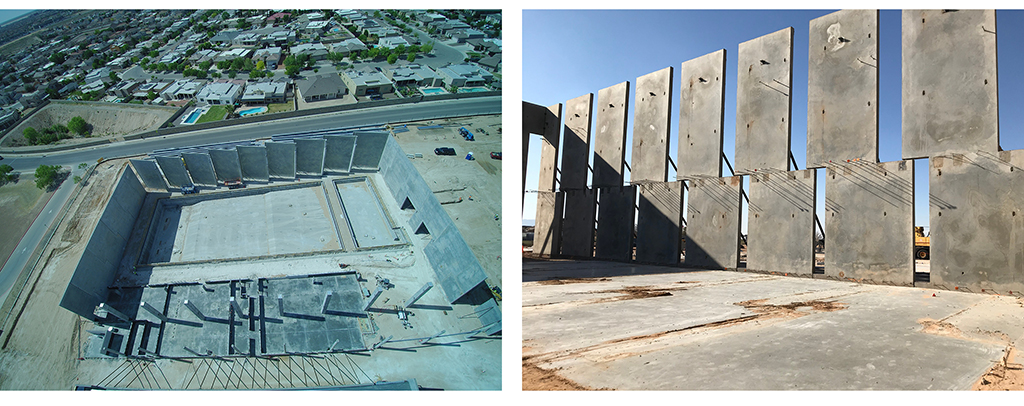
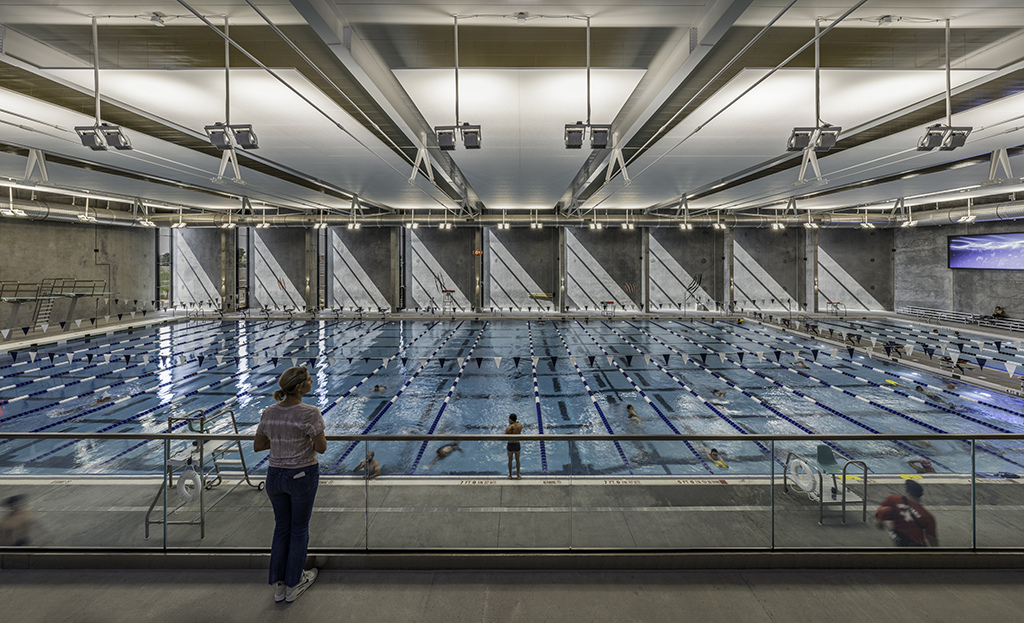
Modulation of the intense, dynamic desert light guided the design concept. The design team carefully articulated humble materials, creating a range of experiences with modest cost implications throughout the building. Shade structures allow for exterior activities, providing relief from the desert sun and creating a transition between indoors and out. Sightlines and connectedness also served as a driver of the design. Inside, light enhances the vitality of people in motion. The shade structures, tilt-wall concrete, wood slats, and perforated metal filter light and views throughout the interior in ways that are appropriate for the desert context. The north façade panels allow indirect sunlight into the building and provide relief from the potentially monolithic wall panels. In the indoor natatorium, a saw-tooth panel arrangement provides indirect natural light without creating dangerous reflections that might impact a lifeguard’s ability to monitor underwater conditions. At night, the south façade is animated with light in support of a city-led lighting initiative.
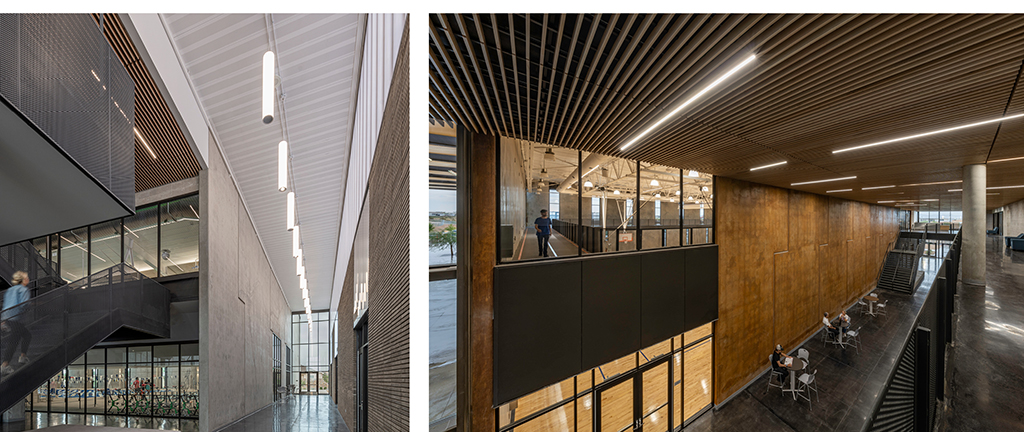
The state-of-the-art natatorium includes a competition-ready, 50-meter pool, a 25-yard lap pool, and two diving boards (1m and 3m) with an associated diving well. The pool can host up to 400 athletes on the deck and has support functions to hold regional competitive swim meets. After ascending to the second floor, patrons have access to spectator seating that accommodates up to 800 people. Above the spectator seating, acoustic panels help minimize echoes and reverberation in a color palette inspired by the flora found at Hueco Tanks. Also on the second floor is a fully-equipped fitness center with a walking track, a gym with a main basketball court, and two side courts holding up to 250 people. The outdoor waterpark is separated from the natatorium. It includes a wave simulator, a 25-foot-tall water slide, a lazy river, rentable shaded cabanas, and a rock-climbing wall with an associated plunge pool.
Throughout the project, the design team prioritized the health and well-being of its users. The team utilized energy modeling to optimize HVAC and envelope performance, learning a counterintuitive lesson along the way. By removing interior insulation and wall finish at the aquatic center and gym, the team freed up budget dollars that could then be applied to enhanced HVAC systems for better energy performance overall. Additionally, the concrete interior surfaces require less maintenance than traditional painted gypsum board. To better support the center’s wellness goals, an efficient method for removing harmful chloramines from the air in the pool was utilized; a continuous evacuation chamber embedded in the pool deck extracts these chloramines. This works in tandem with the perimeter HVAC duct layout in sweeping the air towards the evacuators, ensuring the air is as clean and healthy to breathe as possible.
Perkins&Will’s design for El Paso’s Eastside Recreation Center supports the city’s larger mission to enhance the community’s quality of life by integrating elements that support health, connectivity, and leisure. The simple but rich design scheme is articulated through a masterful play of light and color, while the landscape unites the public art, shaded plaza, water park, and community center. Local, water-conserving vegetation and arroyos surrounding the building minimize water diversion and recognize the biodiversity of the Chihuahuan Desert. Whether visitors are simply stopping by to watch a competitive swim event or lounging by the wave pool for the day, El Paso’s new Recreation Center is a place where neighbors can gather, unwind, and create lasting memories.
Owner: City of El Paso
General Contractor: Sundt Construction
Concrete Contractor: Venegas Engineering Management & Construction
Architect: Perkins&Will in association with In*Situ Architecture
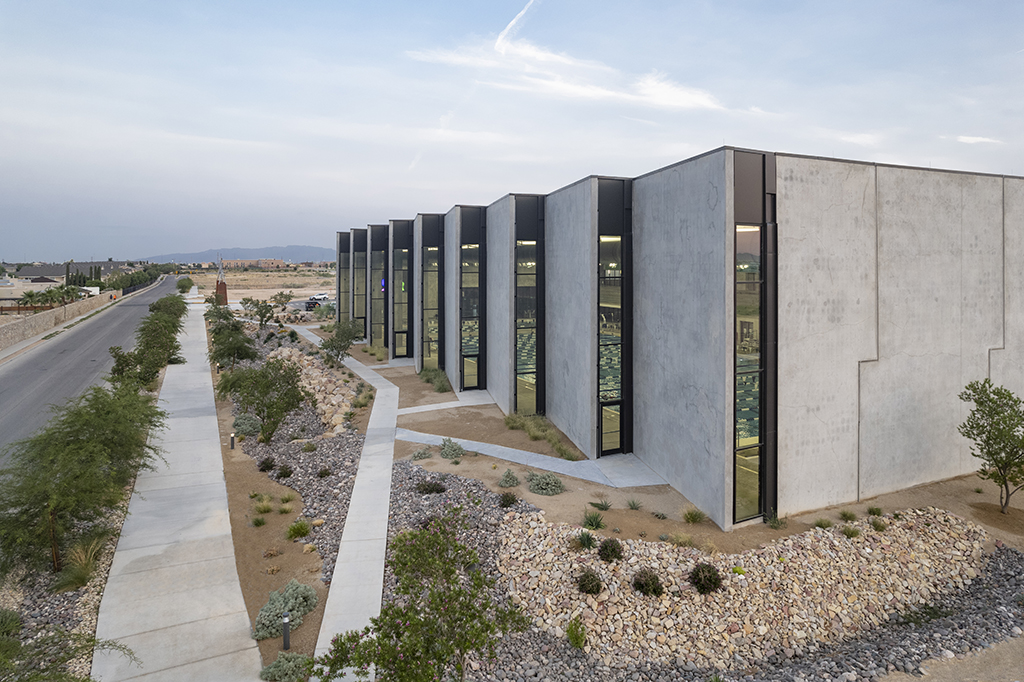
Performance Statement
The City of El Paso requires LEED certification on each project built by the city, which fosters early, sustainable, goal setting that continues throughout design and construction.
For the Eastside Regional Recreation Center, the project team worked with an energy modeling consultant (Design for Energy) that provided the team with early feedback and continued feedback throughout the design process to reduce energy use in the building. As a result, new ideas were discussed, including if it was possible to create passive ventilation in any areas of the building and if using destratification might reduce temperature differences from floor to ceiling. A more efficient HVAC system also resulted, which saved the client money up front and will continue to do so over the long-term. Low-emitting materials were also selected for use throughout the building; this holistically encompassed all interior materials. While the aquatic park will use water, interior fixture selections included low-flow options to reduce water use where possible. Along with this, the entire site is conveyed via a series of water-harvesting depressions and green spaces. Ultimately, all site runoff is held in onsite retention ponds.
Design for Economy
While some of the project’s value options are clearly visible (e.g., tilt-up panels, concrete floors, exposed CMU block walls, precast spectator seating structure), others are not. For example, when reviewing energy compliance models, the team learned that high-efficiency HVAC units at the pool provided better value than what would be gained by adding thermal insulation and associated finishes to the walls at the pool. This not only saved on capital expenditure but also reduced operational expenses for energy use and maintenance of finishes.
Design for Energy
The building design provides a reduction of 54.7% in total energy costs. This was achieved through a combination of strategies that had a beneficial synergistic effect. Firstly, due to the climate of El Paso, there are benefits to using thermal mass as a strategy. Cool nights combined with hot days allow the heavy tilt-up walls to absorb heat during the day, and release it at night. Secondly, the heavy walls are configured to limit solar heat load through glazing at peak times of the day. Finally, the low cost of the tilt-up walls allowed for significant upgrades to the HVAC systems—especially for the units that serve the pool space.








